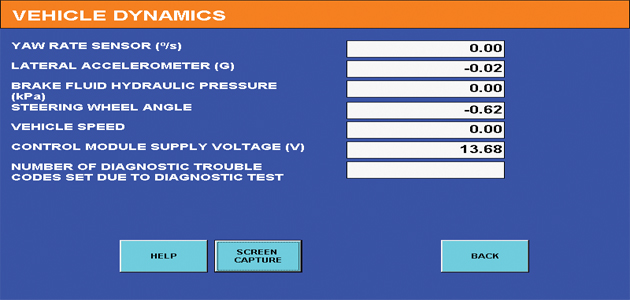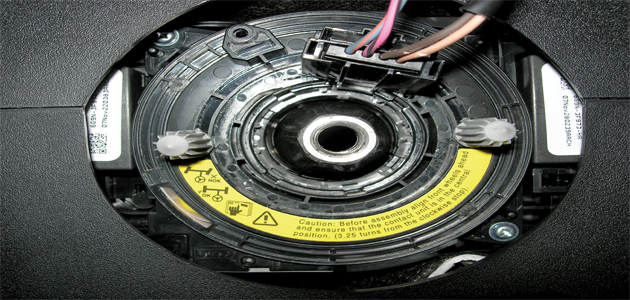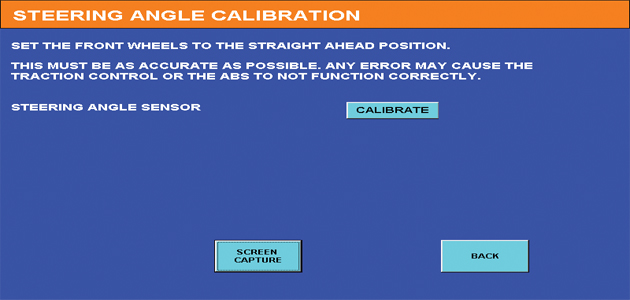
A vehicle’s steering angle sensor (SAS) is used to measure the angle of the steering wheel and the speed at which it is being turned. The signal is predominantly used by the ABS system as part of its stability control function but also by other systems such as ride level control and adaptive front lighting. This means a problem with the SAS signal will cause a fault with any of the systems that use the signal directly, or indirectly.

Autologic screen shot showing typical sensor readings whilst the vehicle is stationary
There are two types of SAS fault:
1. Hard faults
A hard fault will result in no SAS signal. This can be caused by a wiring fault or an internal fault with the SAS.
Checking for hard faults
a) Steering angle sensors may only have four wires attached to them: a power, an earth and two high speed CAN wires (some vehicles may have an ignition and battery power supply). If you can communicate with the SAS you can assume the wiring connection is ok.
b) Using a diagnostic tool, check the dynamic data from the SAS. See if the steering angle changes and the wheel velocity is displayed when the steering wheel is moved. If no change is seen the SAS is faulty. Some steering angle sensors require calibrating if they are replaced. This can be done using a diagnostic tool like the Autologic.
2. Plausibility faults
Plausibility faults occur when the signal from the SAS is not ‘plausible’ when compared to signals produced by other sensors on the vehicle. The sensors used to check steering angle plausibility are primarily the yaw rate and lateral acceleration sensors. The signals from these sensors only increase whilst the vehicle is cornering. When the vehicle is driving in a straight line the steering angle should be less than +/- 15° and the signals from the yaw rate and lateral acceleration sensors should be close to zero.

Freelander 2 sensor mechanically aligned
Plausibility faults can be caused by damage or wear to the steering linkages or faulty yaw rate and lateral acceleration sensors. It can be possible for the steering angle to be implausible but no fault codes to be stored. In this case, the customer may complain that the stability system is over sensitive or activating when not expected.
Checking steering angle plausibility
First drive the car in a straight line and check that the steering wheel is central. If the steering wheel is not central, check for damage and wear to the steering linkages and carry out a wheel alignment.
Once the steering wheel is central, check the steering angle using a suitable diagnostic tool – it should be zero. If it is not zero, calibrate the SAS, though it should be noted that some steering angle sensors are centralised mechanically.

Autologic screen shot showing L322 steering angle sensor calibration
Now either with the vehicle stationary or driving in a straight line, check the dynamic data from the yaw rate and lateral acceleration sensors – the readings should be close to zero. If the readings from either sensor are not close to zero, investigate why. On some vehicles it is possible to calibrate these sensors. Once these adjustments and calibrations have been done the plausibility faults should clear. In the case of early activation of the stability control it may also be necessary to carry out a 4 wheel alignment check.









